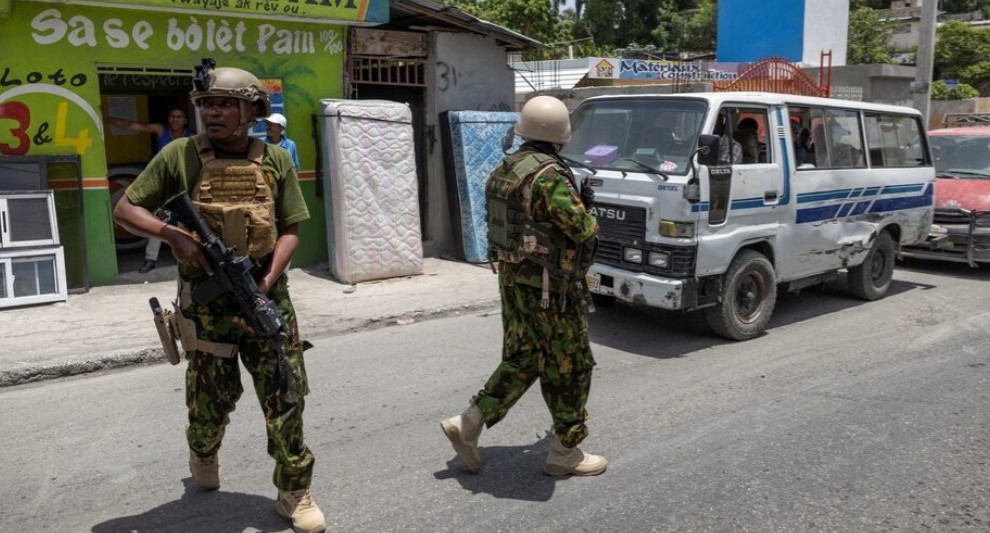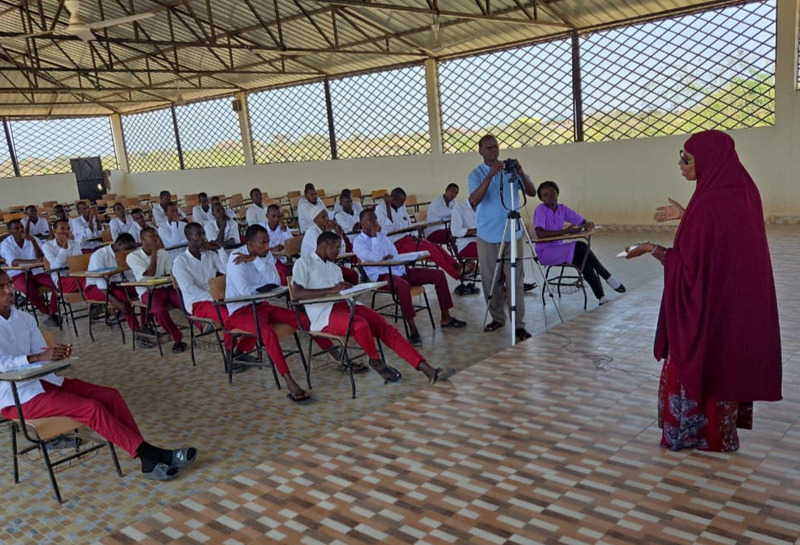Wajir teacher sentenced to 12 years in prison for killing teenage girl

Noor Ahmed Ismail stabbed GNA (name withheld), a pupil at his school, to death on May 12, 2016.
A Wajir County teacher who killed a 16-year-old girl in Kotulo sub-location in the Tarbaj Sub-county has been sentenced to 12 years in prison eight years after committing the crime.
Noor Ahmed Ismail stabbed GNA (name withheld), a pupil at his school, to death on May 12, 2016.
More To Read
Noor was later charged with murder in line with section 203 as read with section 204 of the Penal Code and was found guilty of murder.
Justice John Onyiego of the Garissa High Court, who convicted the teacher, said the sentence included the three years and seven months he was in custody during the trial, meaning he will complete it in about eight years.
Onyiego said he considered that a pre-sentencing report by the state Department of Probation and Aftercare Services favoured the convict.
Pre-sentencing reports
In the report of June 7, 2024, Noor's community described him as a good person and a religious leader.
They, however, condemned the act he committed and recommended that he be held in custody, prompting the probation department to conclude the community was still hostile to him.
The victim's family had expressed bitterness against Noor and recommended a harsh sentence for the offence.
Onyiego said it was worth noting that in the exercise of its discretion, a court is duty-bound to take into consideration guiding principles such as the aggravating nature of the offence committed, the mitigating factors, pre-sentence report, previous criminal record of the accused, and victim impact assessment report.
"I have considered the seriousness of the offence and the mitigation on record. The offence committed is serious, and carries a maximum sentence of death," the judge stated.
"However, considering the pre-sentence report, which is favourable, and further considering the mitigation on record, I do not find the death penalty appropriate. Accordingly, the accused is sentenced to serve 12 years imprisonment less three years and seven months, being the period spent in remand custody."
In mitigation, Noor had pleaded for mercy on the grounds that he is a family man with eight children, a widower and the sole breadwinner. He also noted that he was willing to go for counselling.
Onyiego said he was aware of the objectives of sentencing which include retribution, deterrence, rehabilitation, restorative justice, community protection, denunciation, reconciliation and reintegration.
The Office of the Director of Public Prosecutions (ODPP) had called nine witnesses to prove its case against the convict.
What happened
GNA was found dead by a woman who was looking for a camel in the area.
She alerted villagers and elders, who followed gumboot marks that led them to Noor's home, where he was identified as the prime suspect.
The elders recovered a blood-stained knife and gumboots belonging to the teacher.
The ODPP relied heavily on investigations by government scientists Elizabeth Waithera Onyiego and William Munyoki, both attached to the Government Chemist, and pathologist Johansen Oduor in proving the case against Noor.
Oduor told the trial court that the body was partially decomposed but that the postmortem revealed an incised wound from GNA's neck, as well as two stab wounds on the side of the chest.
He also noted that for religious reasons, he did not open the body but still formed the opinion that the cause of the death was multiple injuries due to penetrating trauma.
The postmortem report was presented as the first exhibit in the case.
The ruling
The Directorate of Criminal Investigations (DCI) had submitted the blood-stained dress GNA wore on the day she was killed along with the knife, gumboots, and shawl found in Noor's house to the court for analysis. Noor wore that shawl on the day of the crime.
Onyiego's DNA investigations established that blood stains on all items submitted to her by the DCI were from the same person and the ODPP submitted her findings in the court as exhibits.
Munyoki, a government analyst, was tasked with ascertaining whether soil samples collected from GNA's dress and Noor's gumboots matched. His investigations established that the soil stains on both items were from the same geographical area.
At the end of the trial, Justice Onyiego said the evidence from Oduor indicated that GNA died as a result of multiple injuries due to penetrating trauma.
"From this piece of evidence, it cannot be denied that the accused person must have intended to cause the deceased grievous harm or death hence proof of malice aforethought," stated the judge.
Top Stories Today















































